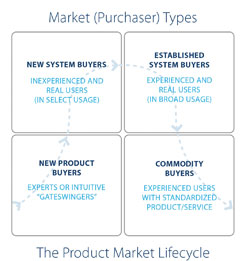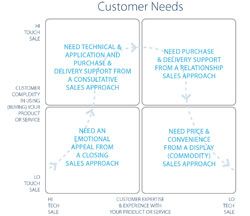Do you need a sales transformation?
by Chally Group
Every organization must concern itself with sales talent management. The goal is to identify the right talent early, screen out the mismatches before they are hired, retain the high potential talent you want to keep and identify and develop talent for future opportunities within the organization. An audit of a sales talent pool provides organizations with easily accessible decision making tools that enable them to select, align, engage, develop and retain the sales talent necessary to drive strategic objectives.
What Makes a Great Sales Force?
Chally Group Worldwide routinely presents the World Class Sales Benchmarking study. This study consists of businesses across a broad industry spectrum to identify the critical sales practices of exceptional sales forces as measured by the customers they serve. For the most current benchmarking research, each salesperson was rated on 15 critical evaluation points. In addition, three consecutive years of purchase volume for each rated salesperson was statistically correlated to identify the factors that drive buying decisions.
The results of this research are organized into a comprehensive manual, the World Class Sales Excellence Report. The following are key findings of the World Class Sales studies.
What Customers Want from Sellers
Our initial tri-annual interviews with over 1,000 corporate customers established three major needs customers expected vendors and sellers to address, even though customers were not confident they could get them.
- Customers want to narrow their own focus to the few things they do best, and outsource the rest without the added overhead costs of supervising their suppliers;
- Customers want sellers to know their business well enough to create products and services they wouldn't have been able to design or create themselves;
- Customers want proof — hard evidence — that their suppliers have added value in excess of price.
Critical Salesperson Skills
Having conducted extensive research into customer purchasing behavior, we are able to enumerate these new buying needs. This list of expectations essentially defines the role of the new sales professional of the 21st century. In the customers' own words:
- Be personally accountable for our desired results
- Understand our business
- Be on our side
- Design the right applications
- Be easily accessible
- Solve our problems
- Be creative in responding to our needs
Customers believe sales forces that excel at these seven factors will best fill their three basic business needs. By benchmarking the top 10 of these sales forces, we identified the critical success factors for "World Class" sales, and the standards of sales excellence. Benchmarking pinpoints how world-class sales forces manage customer satisfaction, understand their customers' businesses and deliver the other benefits their customers want.
New Requirements, New Culture
To be the "outsource of choice" forces a seller to refocus the corporate culture. Creative engineers or other technical experts who invent new products are not enough to sustain a competitive advantage. Too many new products do not match customers' priorities or are too difficult to understand or use; sometimes they are simply not needed.
The focus must change from product to benefit or business result. Grandiose products and services with more capacity, features or options are often just seen as overpriced. Additionally, products and services must be simple to use and manage, either in their own right or because the seller manages the complexity as part of the sale.
The focus must also change from price and delivery to utility and ease of use, not only of the product but also in doing business with the seller. The "outsource of choice" will take responsibility for managing the relationship or, as sometimes defined, the "partnership" between seller and customer. This will require the role of the salesperson and, consequently, the role of sales managers who train and develop the salespeople, to change. Top sellers are changing from peddlers to relationship managers, from order-takers to consultants. In some cases, order taking, service, technical support and product expertise are not even directly provided by the salesperson.
While requirements are changing and many solutions are new, the approach top sellers use is remarkably consistent, either intentionally by benchmarking others, through partnerships, or coincidentally by just attacking their own needs. Through a "total quality" styled approach, they investigate and analyze their customers' needs and problems. They reorganize their processes, develop new skills, create new measures and new standards and, most of all, commit to continuous improvement.
The most basic tenets of total quality management require the biggest investments to be in people and measurement. In fact, the hallmark of how the world-class selling companies can be recognized is in their approach to their people and their approach to information and its management.
Adding value requires at least three critical elements:
- Measure (identify the business needs of customers);
- Develop the added services to wrap around your products, which will guarantee customers' business improvement;
- Measure again for both continuous improvement refinements as well as proof for customers that their business was improved.
Changes at all world-class sales forces are still in process and will continue to be. Customers did not credit these top sales forces with perfection, just being closer to it than their competitors. But the spirit of kaizen (continuous process
improvement) is well-respected in world-class sales force management. In essence, no matter how good they get, they recognize they can always be better.
 |
 |
How to Match the Right Type of Salesperson to Your Customers*
The most successful sales managers recognize that all good salespeople must have certain vital skills and motivations. The degree and type required, however, will vary according to what customers need in order to use the product or service. The best strategy is achieved by matching salesperson skills, focus and motivation to best serve these needs. Market and customer analysis by Chally has identified four distinctly different types of customers. They, in turn, respond most positively to four different types of salespeople.
Truly new products are typically purchased either by technical experts (who must buy new technology to remain expert) or more frequently, by visionary "gateswingers" who have never used that product. For example, the state-of-the-art dermatologist who buys a new style laser for removing skin blemishes but hires an expert to operate the equipment. Even so, most brand new products must seem exciting yet be simple enough to understand the benefit. The gateswinger, then, doesn't want 20 different features from which to choose.
The new system buyer is an inexperienced but real user. This could include a financial services buyer who must select asset managers. It could also be a computer system user. Once this person becomes knowledgeable on usage, he or she becomes an experienced and more controlling user of the established system.
Commodities buyers have become so totally experienced with a products or service that the purchase and usage are completely standardized and often delegated as a routine function . . . when was the last time you asked how to use an electric pencil sharpener?
Understanding the Basics of Customer Needs
Customer need is largely driven by two factors:
- Complexity of using a product/service
- Experience or expertise in its use or application
Chally research has found that intuitive gateswingers need an emotional appeal stimulated by "closing" salespeople in order to buy. Inexperienced but real users have both substantial technical and application support needs and purchase and delivery needs that must be met by a "consultative" sales approach in order to use their system. Experienced and demanding users no longer have high technical and application support needs. However, they continue to have pressing purchase and delivery needs that include a major personal component with a "relationship" salesperson to help in the ordering process. Typically, only two needs predict commodity buying behavior from "display" salespeople: price and convenience.
A Strategic Method for More Accurate Sales Talent Management
Most organizations have identified Sales Talent Management as a strategic priority. However, the methods they use to evaluate employees are typically flawed. Making effective decisions about Sales Talent Management is nearly impossible when relying on methods that are subjective, inconsistent, not tailored to specific job skills, or because the results are not meaningful enough to support objective and accurate decision making. However, an assessment that creates truly predictive data is a priceless decision-making tool. Assessment results are used for employee skill gap identification, team building, career development, succession planning, talent deployment, training priorities, and many other critical applications that can have a direct and immediate impact on improving employee, team and organizational effectiveness.
For a copy of the full Sales Transformation Roadmap executive brief, go to http://chally.com/download-sales-transformation-roadmap/.
*based on The Quadrant Solution book authored by Howard Stevens
This article originally appeared in the Sept./Oct. 2011 issue of Industrial Supply magazine. Copyright 2011, Direct Business Media.













